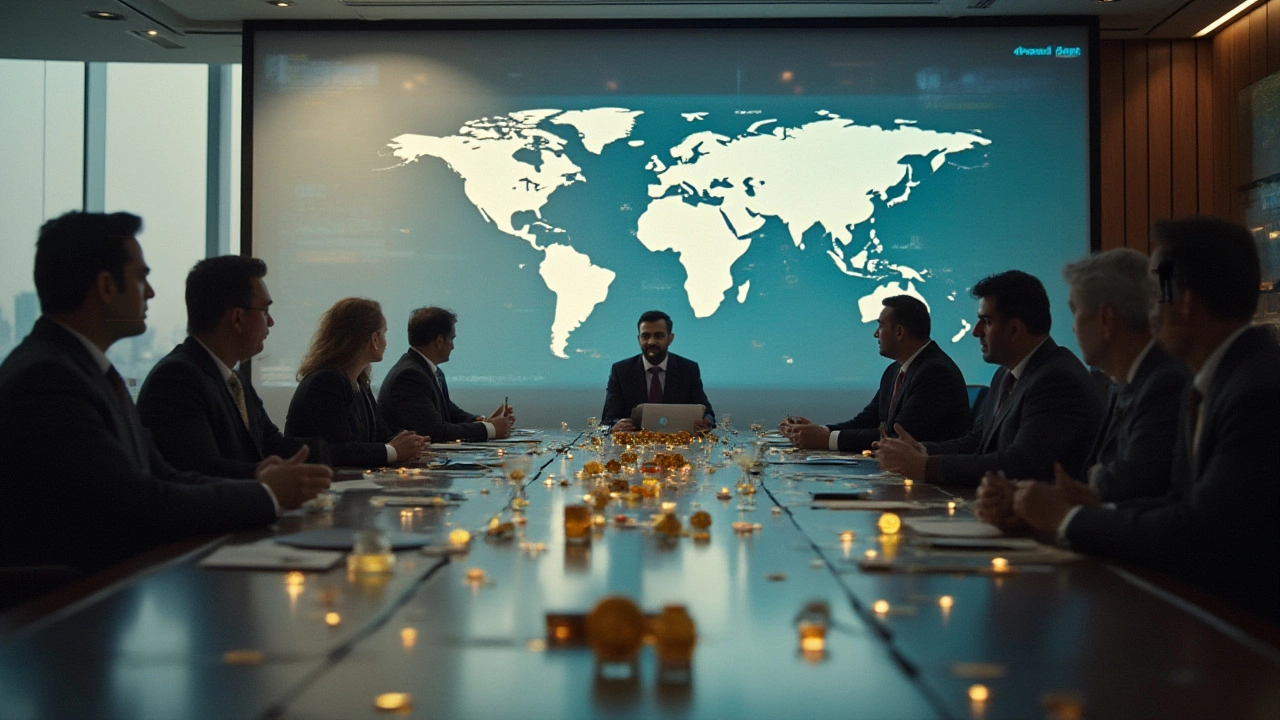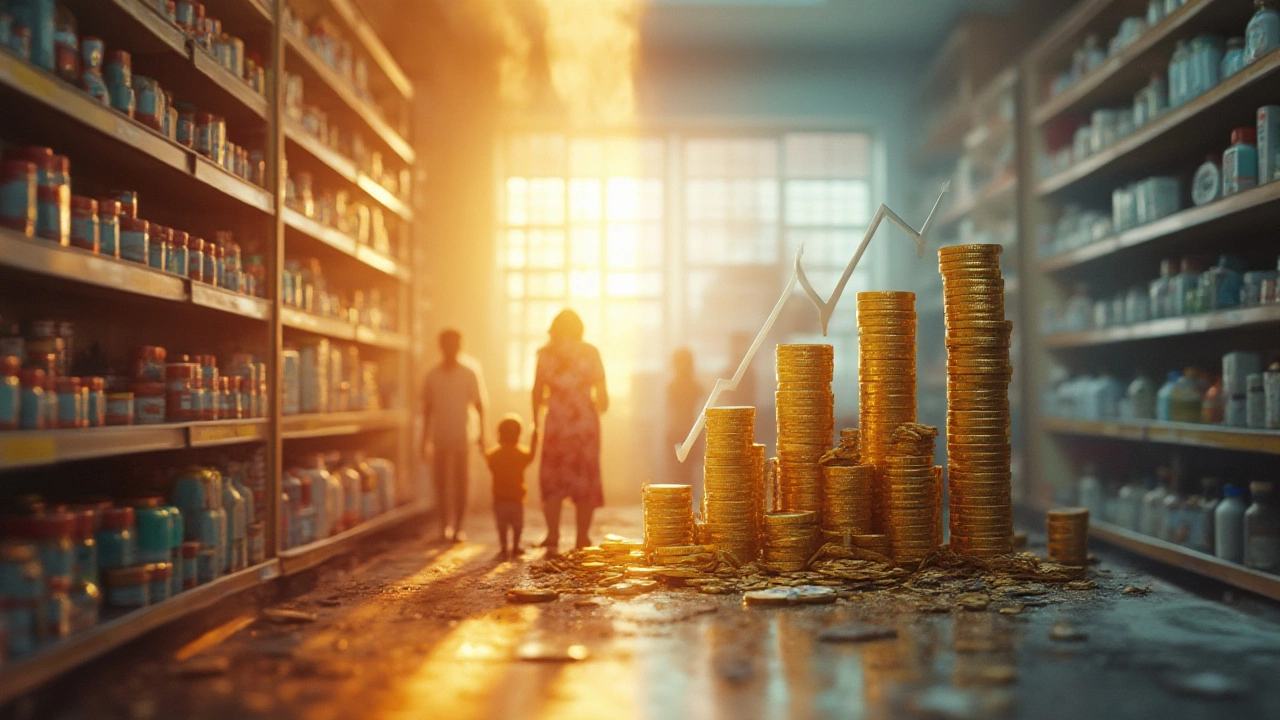If you’ve ever wondered who sits on the pharmaceutical industry’s throne, it’s not just about having the best-selling painkiller or the most famous cold remedy. The richest pharma companies are financial wizards, strategy powerhouses, and sometimes—let’s be honest—public villains and global saviours at the same time. The sheer amount of money swirling through this industry might blow your mind. In 2024, the world spent over $1.6 trillion on medications, making this sector richer than tech and energy in some years. Yet, most people don’t even know the names behind their daily prescriptions.
The Billion-Dollar Club: Who’s Truly at the Top?
No endless guesswork: the usual names pop up every year—Pfizer, Johnson & Johnson, Roche, and Novartis. But in 2024, one company stood out with a jaw-dropping revenue line. Johnson & Johnson clinched the crown as the richest pharma company by annual sales, raking in close to $95 billion in revenue. It’s worth noting Johnson & Johnson isn’t just about pills; their reach goes from cancer drugs to shampoo. Pfizer, thanks to its COVID-19 vaccine windfall and legacy drugs, ran very close behind with $75 billion. Roche held steady in third place with its focus on oncology and diagnostics, bringing in over $69 billion.
Here’s where things get interesting: while US-based companies top the list by dollar signs, Switzerland’s Roche and Novartis punch way above their country’s population size. And then, there’s Merck (known as MSD outside North America), bringing in $60 billion from everything from vaccines to diabetes medicines. It’s not just about selling more pills. These companies have cracks-of-dawn research labs, armies of salespeople, and a network so wide that even your local chemist is probably serving up stuff they developed.
| Company | 2024 Revenue (USD) | Main Focus Areas |
|---|---|---|
| Johnson & Johnson | $95B | Pharmaceuticals, Medical Devices, Consumer Health |
| Pfizer | $75B | Vaccines, Oncology, Internal Medicine |
| Roche | $69B | Oncology, Diagnostics, Immunology |
| Novartis | $56B | Oncology, Neuroscience, Generics |
| Merck & Co. (MSD) | $60B | Diabetes, Oncology, Vaccines |
What’s wild is how close these giants actually are, something you don’t spot at first glance. Every year, shifts in oncology breakthroughs or approvals of one new blockbuster medicine can flip the rankings. A big push in China, or landing a new vaccine deal, can mean billions changing hands practically overnight.
What Fuels Their Financial Muscle?
Big pharma’s money printing machine isn’t just about selling millions of tablets. Take oncology drugs—they only treat a sliver of patients, but a single patient’s course can cost over £100k per year. For example, Merck’s immunotherapy drug Keytruda pulled in over $25 billion globally last year. On the other end, humble cholesterol medicines, like Pfizer’s Lipitor, made history as the first $10 billion-per-year drug. Scale matters, but so does focus. Here’s a tip: look where the big players are spending on research—cancer, diabetes, rare diseases. These areas see rapid innovation, higher prices, and fewer regulatory hurdles.
Vaccine technology, once a quiet backwater, is now a big deal. Before COVID, vaccine revenue grew at a modest pace. Post-2021, it snapped upwards, with Pfizer alone making $36 billion from its COVID jab in just twelve months. Another underestimated area? Biosimilars (basically, generic versions of biologic drugs). Novartis’s Sandoz arm created serious cash flows just from biosimilar versions of older blockbusters. When big patents expire, even these cheaper alternatives become gold mines.
Then there’s the M&A game. When a giant feels stagnant, they gobble up a startup with a promising new molecule or technology. In 2024, Pfizer spent $43 billion buying Seagen, a leader in cutting-edge cancer therapies. That’s a bigger deal than most countries’ entire health budgets. These deals let big names pick up fresh ideas while plugging sales gaps, and often send their share prices soaring overnight.
And don’t underestimate scale in marketing and distribution. Most big pharma companies have boots on the ground in over 100 countries. Launching a drug in Ghana or Brazil? Upper management can organise it by the end of the week. No small rival can match it.

How They Built—and Defended—their Fortunes
Ever wonder how these companies keep the cash flowing year after year? Patents are their secret weapon. When a new drug gets approved, the clock starts ticking—usually 20 years of exclusive sales. That gives them a monopoly, and they charge whatever the market will pay. Humira, the world’s former best-selling drug from AbbVie, enjoyed years at the top, making up to $21 billion annually before copycats muscled in when the patent expired.
The richest pharma companies spend billions on research but can also spend more than entire universities on lawyers and lobbyists. In the US alone, pharma spent almost $375 million on lobbying in 2023—more than oil, banking, or defence. This influence means new laws often work in pharma’s favour, smoothing the path for higher prices or longer patent protection.
Pharma companies don’t just sit back and wait for the next big disease. Their business teams manage a pipeline like professional football scouts, always eyeing the next wonderkid. If they don’t have it in-house, they buy it. Deals are ruthlessly competitive: Gilead spent $11 billion for the rights to Kite Pharma’s cell therapy; AstraZeneca paid $39 billion for Alexion and its rare disease drugs—a game-changer for their North American business.
Want to spot tomorrow’s biggest winner? Watch the annual race for “First in Class” and “Best in Class” drugs. Whoever gets exclusive rights to a game-changing new medicine—whether for Alzheimer’s, cancer, or obesity—can make billions fast. Companies also defend their market share by tweaking old drugs: new dosing, expanded approvals, longer-acting formulas. Sometimes, pharmaceutical giants win new patents just for changing the pill colour or release time. Smart, annoying, but totally legal.
Global Reach and Hidden Surprises in Pharma Wealth
Most people think Big Pharma is all American or Swiss. But look closer: India’s Sun Pharma and Cipla, China’s Sino Biopharm, and Japan’s Takeda have become billion-dollar giants in their own right. These companies leverage low-cost manufacturing or local know-how to undercut the Western behemoths—especially with generic drugs. India now supplies about 20% of the world’s generics; you’ve likely swallowed a Sun-manufactured paracetamol without ever knowing.
Diversification helps, too. Johnson & Johnson’s non-drug businesses—think baby powder and contact lenses—mean even a massive drug recall won’t bankrupt them. Roche, however, shines because of its diagnostics business; most hospitals that want the fanciest blood tests are buying Roche machines and software. This balanced approach keeps the cash flowing, even if a blockbuster drug stumbles.
The biggest surprise? Not all pharma riches show up in public company rankings. Privately held firms like Boehringer Ingelheim quietly rake in more than $25 billion per year, out-earning many better-known brands. Some founders and families still own big slices of these hidden champions, fuelling multi-generational wealth that rivals the old industrial dynasties.

Everyday Impact: Why Big Pharma’s Riches Matter to You
It’s easy to look at these billion-dollar profit machines and forget what keeps them afloat: people. From breakthrough treatments in cancer or diabetes to everyday items like allergy tablets, the richest pharma companies shape hospital care, local pharmacies, and, more often than not, your family’s dinner-table chat when someone gets sick. When my son Ishaan needed antibiotics last winter, I knew the tablets owed their existence to layers of research, finance, and—yes—boardroom arm wrestling.
The scramble for new drugs brings hope. The richest pharma companies have poured billions into rare disease cures that were once a death sentence, from cystic fibrosis to spinal muscular atrophy. But they also face heat for pricing even older drugs sky-high. Humira saw US patients paying $60,000 a year, sometimes higher. The UK’s NHS negotiates better deals, but it’s a constant tug-of-war.
- People in developing countries still struggle for access to new innovations. Rich pharma firms, like Novartis, run programmes for cheap malaria drugs and free chemotherapy, but it’s often outweighed by the size of the problem.
- Public opinion matters. Social backlash (just look at drug price hikes going viral on social media) can push a company to rethink strategy almost overnight.
- Access to medicines, drug shortages, and global health emergencies put the spotlight squarely on the world’s richest pharma manufacturers—forcing big players to either step up or face reputational wipeouts.
If you’re in business or manufacturing, check out how these pharma giants run global supply chains. They’ve mastered logistics, patent law, and customer demand at a scale no other industry matches. Understanding their playbook can inspire everything from leaner factories to how you market your own products. Next time you hear about a new “blockbuster” drug, remember: it’s about lab coats, but also about bold bets, deep pockets, and a whole lot of calculated risk.
